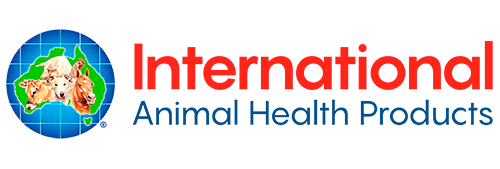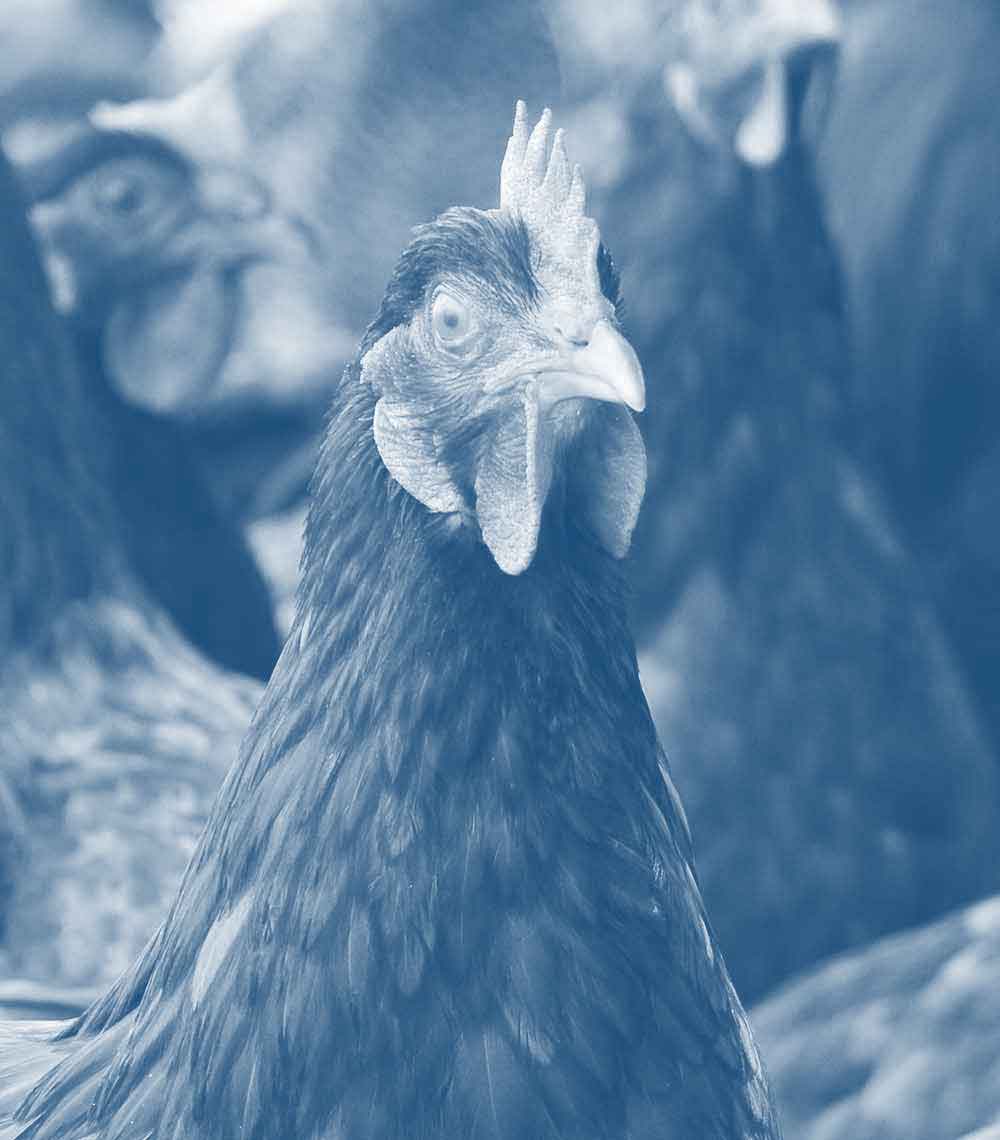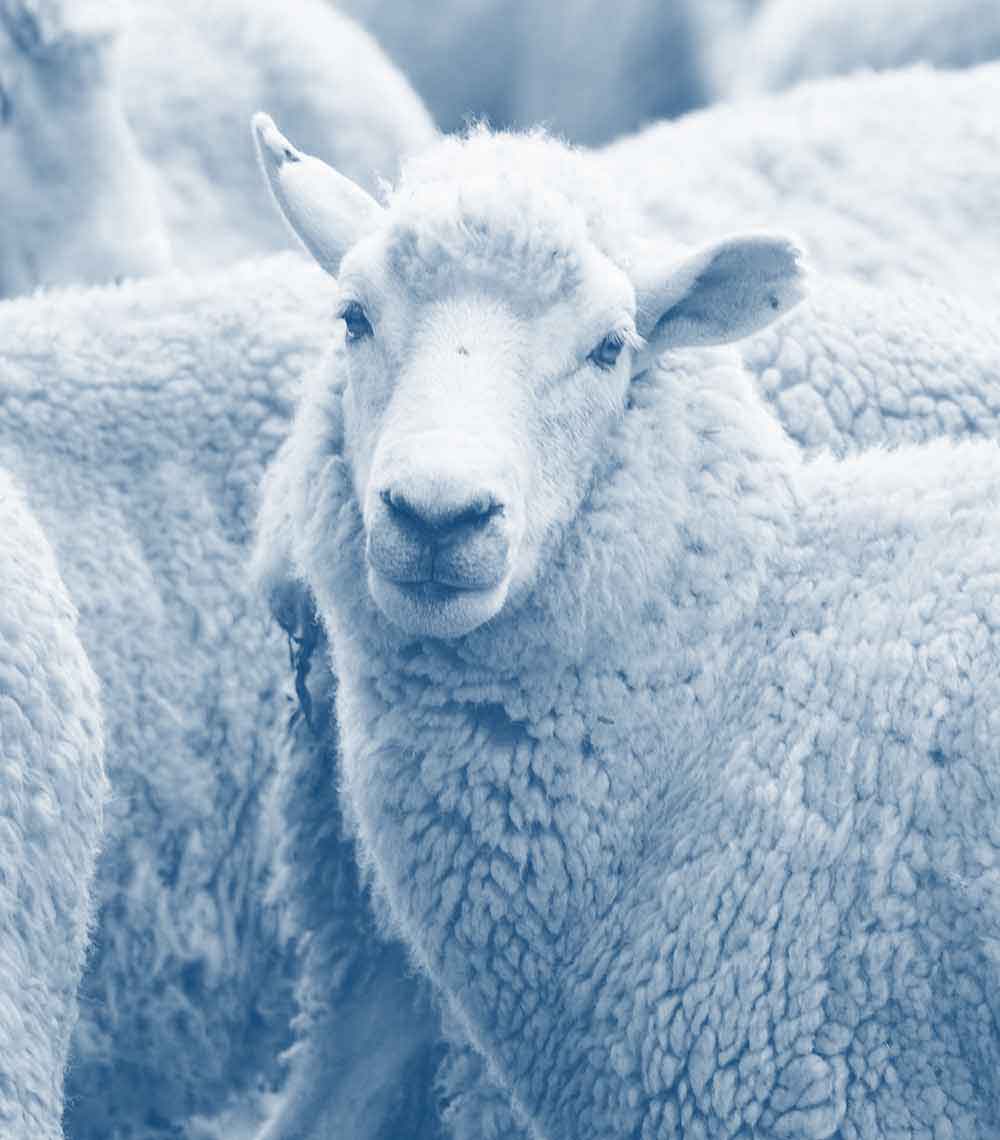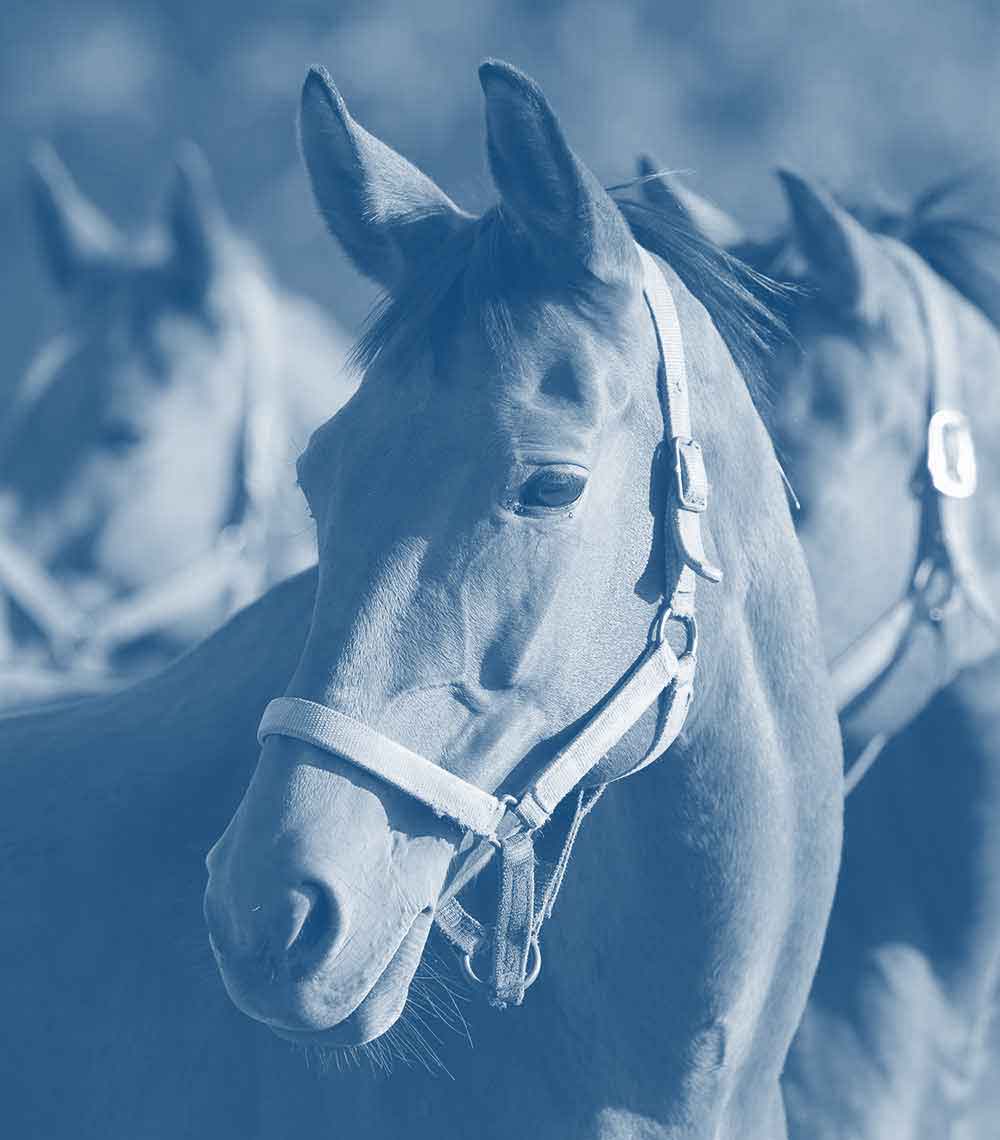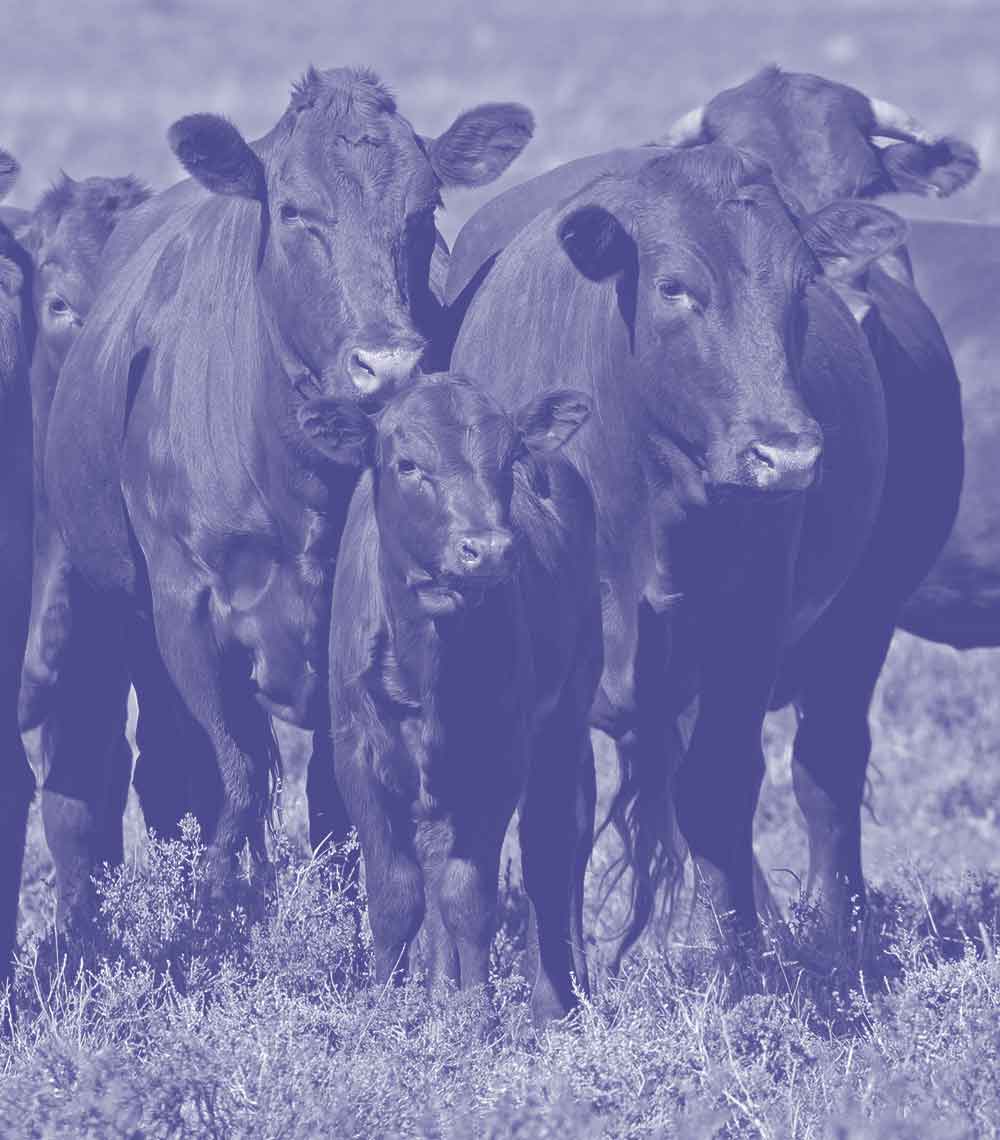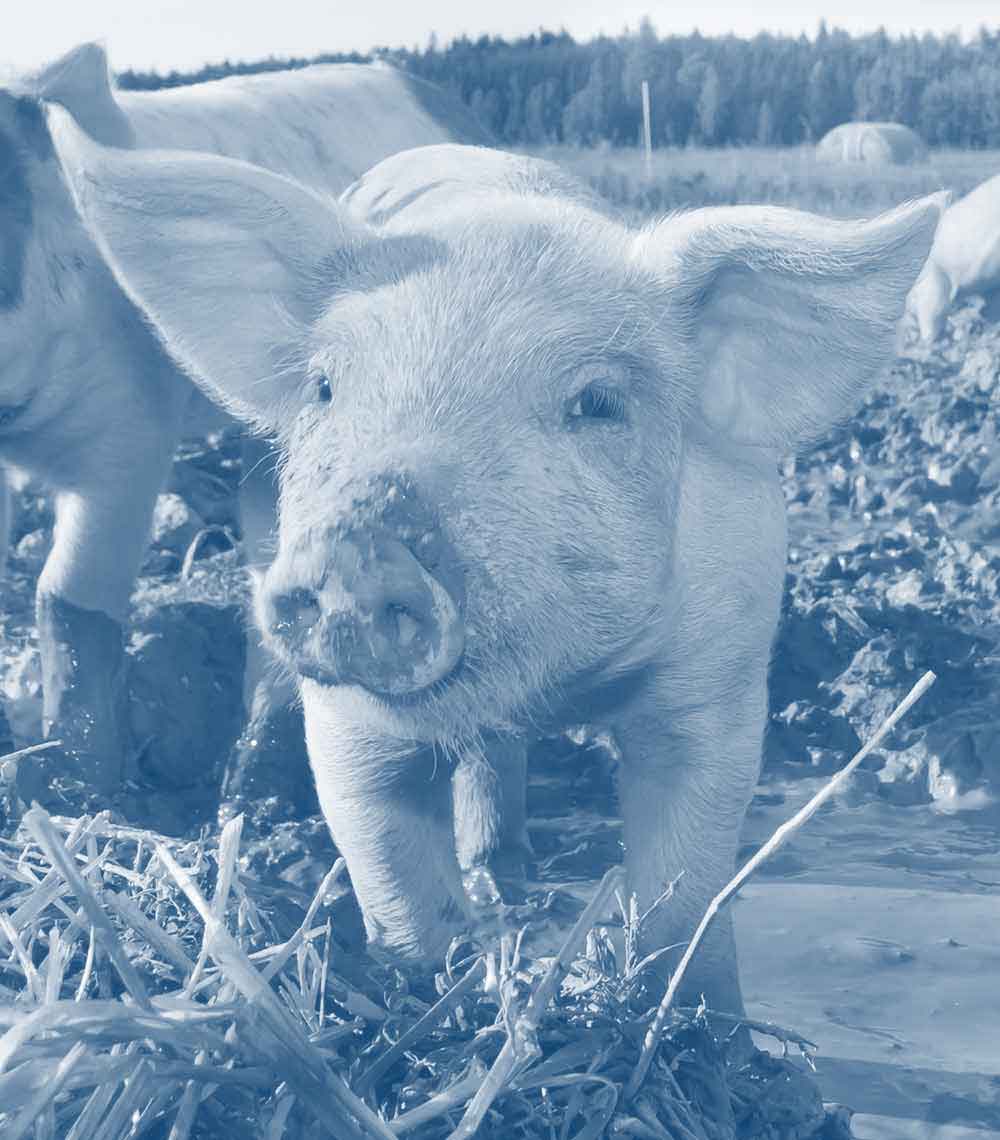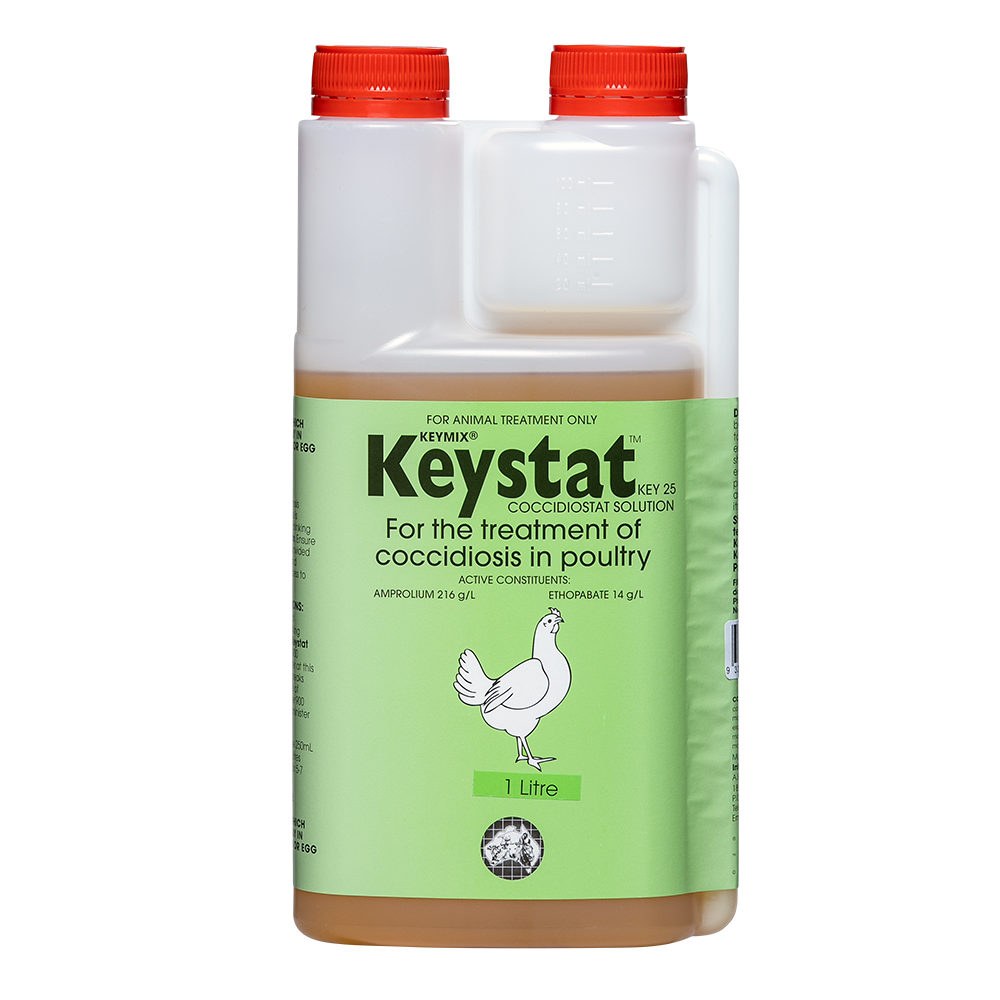
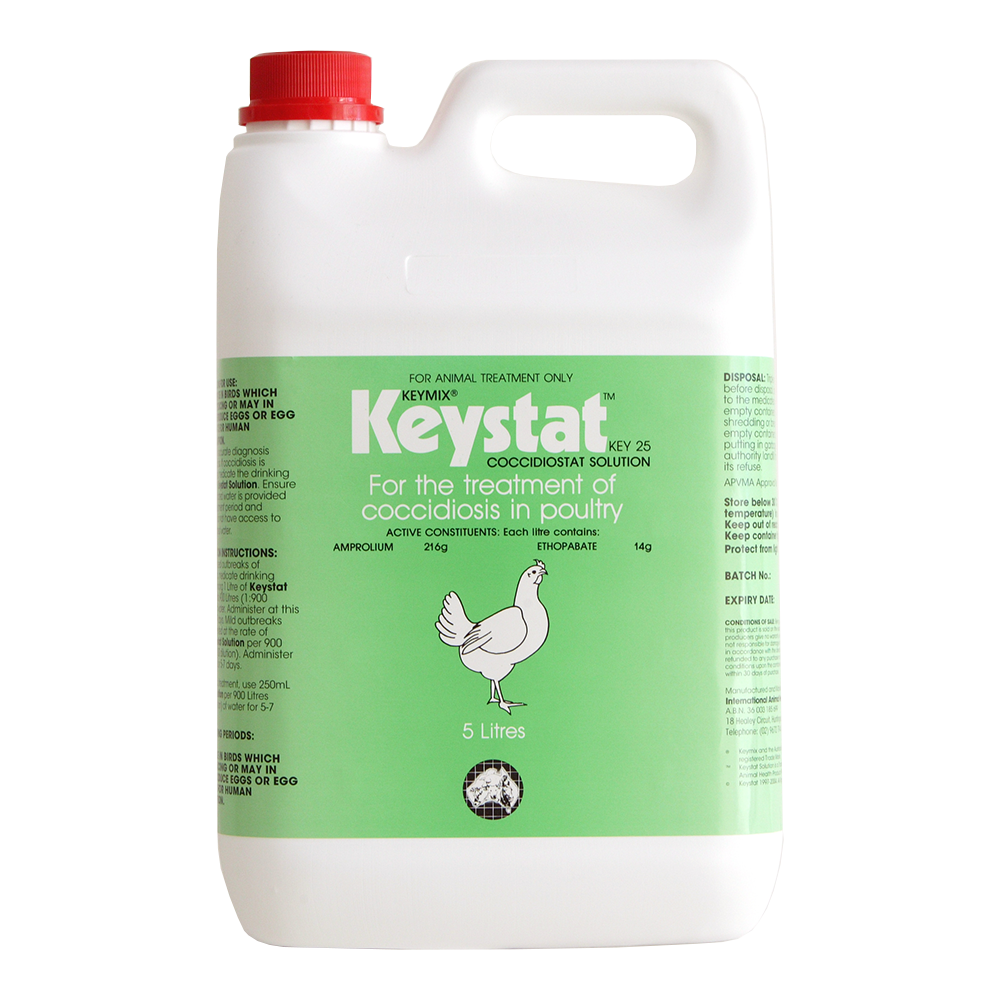
Coccidiosis Treatment Solution for Poultry
Keystat Solution™
Broad-spectrum coccidiostat solution
Broad-spectrum coccidiostat solution for the treatment of coccidiosis in poultry, especially broilers
- Contains twin anticoccidials - amprolium hydrochloride and ethopabate
- Amprolium hydrochloride exhibits high activity against E. tenella and E. acervuline
- Ethopabate has anticoccidial activity especially against E. maxima and E. brunetti
- The synergistic combination of amprolium and ethopabate is effective against E. necatrix
Pack sizes: 1 L, 5L
Available: Australia
Find A Store near you
Q. Is a coccidiostat good for chickens?
A: Coccidiosis remains one of the major problems of the poultry industry. Caused by Eimeria species, Coccidiosis is a contagious parasitic disease affecting poultry with great economic significance. Currently, in order to prevent health problems caused by this disease, broiler farmers make extensive use of coccidiostats (e.g. Keystat) in poultry feed or water to maintain animal health.
Q. What is the treatment of coccidiosis poultry?
A: Treatment of coccidiosis in poultry involves a combination of medications, management practices, and preventative measures to reduce the impact of the disease. Coccidiosis is caused by protozoan parasites (Eimeria species) that infect the intestines of poultry, leading to poor growth, diarrhea, and even death in severe cases. Here's a typical approach to treatment:
Anticoccidial Medications (Coccidiostats or Coccidiocides):
It's essential to monitor the flock regularly for signs of improvement and adjust treatment if necessary. A veterinarian's guidance is recommended for specific outbreak situations to tailor treatment based on the particular Eimeria species involved.
Anticoccidial Medications (Coccidiostats or Coccidiocides):
- Amprolium: One of the most common treatments. It works by inhibiting the parasite’s ability to uptake thiamine (vitamin B1), which they need to grow and reproduce.
- Ethopabate: Ethopabate is often combined with amprolium. It further enhances the anticoccidial effect by targeting a different metabolic pathway, making the combination more effective against Eimeria species.
- Sulfonamides: These medications, like sulphaquinoxaline, are used to treat clinical outbreaks of coccidiosis. They work by interfering with folic acid synthesis in the parasite.
- Ionophores: These are preventive anticoccidial medications added to feed like monensin. These are more for control rather than treatment once clinical signs appear.
- Toltrazuril: A more recent and effective treatment option that kills a broad spectrum of Eimeria species.
It's essential to monitor the flock regularly for signs of improvement and adjust treatment if necessary. A veterinarian's guidance is recommended for specific outbreak situations to tailor treatment based on the particular Eimeria species involved.
Keystat Solution™
Active constituents: Each L contains: AMPROLIUM HYDROCHLORIDE 216 g ETHOPABATE 14 g
Contains twin anticoccidials that provide a synergistic effect which is highly effective in the control of major coccidiosis-causing Eimeria species in birds. Amprolium and ethopabate each have an individual spectrum of activity, which is enhanced by the combination.
Downloads:S.D.S DATASHEET
